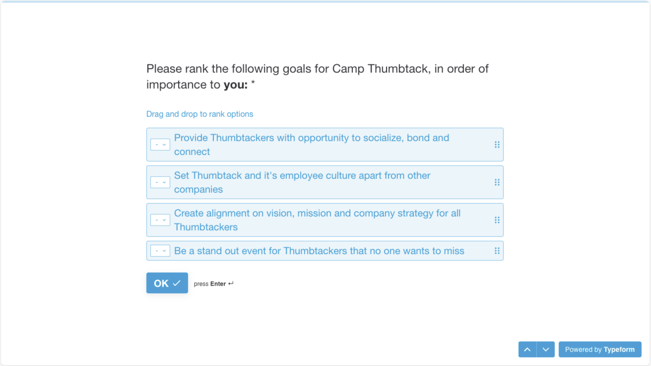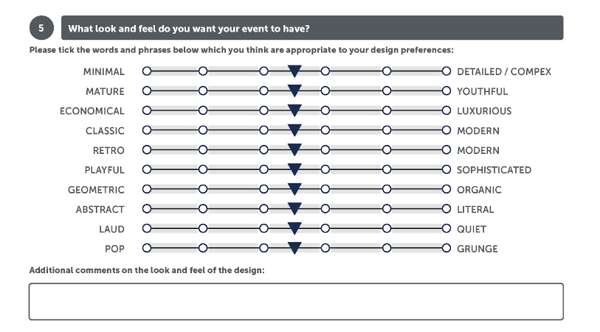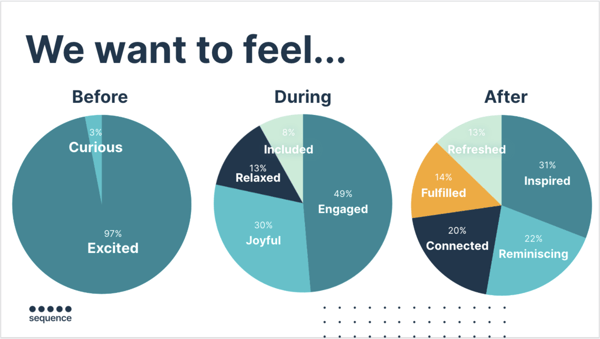We’re back with another installment of our SEQ Discovery series! 👏 You’re welcome 😉
Last time, we talked about what Discovery is and why we do it. Definitely go back and take a gander if you haven’t already.
Today, we’re going to talk more about how we actually go about the Discovery process. The Discovery process is critical to our success as a strategic agency. Our findings and key takeaways are the foundation for every aspect of a project moving forward. In other words, it’s a really big deal!
Preparing for Discovery
Discovery starts with asking many informed questions. So we always start internally with reviewing the information we already have and doing any additional research. What do we already know from an RFP, or from early conversations with a client? What nuggets are living in the brand guide? What can we find online, or see from past events? Typically, some of the key points have come up already so we have a basis to ask the most productive follow-up questions as a project gets underway.
We want to make sure we’re not asking the client to do our homework for us, and that Discovery is about our deep curiosity and learning more than meets the eye. Frankly, not everyone on the client side enjoys this process as they are often hiring us to do the legwork they don’t have the resources for. For many this can be an investment of time upfront they may not have expected. It’s important to assure them that they just need to show up engaged as themselves, that the process will actually save them valuable time in the end, and that we will fully guide them.
Typically our whole event team is included in Discovery so that everyone can walk away with the same experience and shared understanding of the client’s goals. Conversations are usually spearheaded by the strategy arm of our Creative Department as it’s the starting point for all strategic ideation as well.

Through Discovery, we unearth the information we need to create successful experiences for our clients. We spill all the tea so that we can be fully on our client’s team and (in a non-creepy way) in their heads.
When to Discover
Discovery should take place as early in the process as possible. Often it will be the first meeting, or potentially the second meeting if we need to onboard a new client to how we typically work at Sequence and get some of the other logistics squared away - meeting cadence, comms preferences, etc. a Discovery of a different kind! Sometimes Discovery can be paired with a client-led Brand Immersion session. This is where we ask the client & the client’s brand or design team to present the key elements of their visual, written or internally-facing brand as it relates to the project so that we’re all on the same page (more about that in a future blog!).
How & Who?
How questions are asked and of who are also key elements to the success of the Discovery process. We often assess the how based on who; who are we asking these questions of and how can we get the best results from this group? Some clients have a smaller group of stakeholders, dedicated brand or marketing departments, senior leadership in the mix, mid-sized committees who will stay involved throughout, etc.
What is incredibly important to the process is that anyone who will be weighing in on the event or experience at any point and has the authority to change decisions participates in some way in Discovery. We bolded this for emphasis! It can be really tough to go through the Discovery process, hit the ground running and then when a concept lands on a key decisionmaker’s desk down the line it’s not at all aligned with their priorities. Discovery is not the moment to save the CMO or CEO time if they will at any point weigh in on the experience and expect to change course.

Getting all the right people to the table at the same time can be challenging for sure! Ideally, Discovery is a live conversation (IRL or virtually) since it also offers an opportunity for our team to get to know the client more, talk face to face, and see how they relate to each other. This works well for a small group and even for a mid-sized group with a clear protocol and agenda. We can even set up a 2-part conversation: one for our day-to-day contacts and another for a larger committee, for example. We want to ensure that it’s not too overwhelming, which can keep people from actively participating. For much larger groups or groups that are too busy to meet as one, we will sometimes make this an async exercise, either as a survey or shared document. Either way, participation should be mandatory (in a fun way! Ha).
What to Discover
So, what are we actually trying to Discover?! Great question! The answer is… it depends. Discovery can cover a lot of ground or be more targeted. Not everything is relevant to every client or experience, so it’s important to really focus on what applies in each and every conversation. Sometimes a Discovery conversation will actually lead us to other areas to discover.
Here is a non-exhaustive list of some key elements we explore in Discovery (in no particular order):
Why this event experience / why now, goals, KPIs, success metrics (tangible & intangible), the brand (externally-facing, or internally-facing - sometimes called an EVP - employer value proposition), audience demographics, key stakeholders, past events / event history, competitors, event concept, event format, thematics, messaging, shared definitions, style, how they want to make people feel, how they don’t want to make people feel, inspiration, budget, priorities, internal deadlines or milestones, decision making, venue, vibe, geographical location(s), audience engagement, giveaways, surprise & delight, sponsorships, existing resources, programming elements… and MUCH more!
Keep in Mind
It is very important that we go into the conversation(s) clearly with a hierarchy of input (some clients don’t like to admit their organization has a hierarchy, but we have yet to meet a group that doesn’t really!). We should know who the budget owner(s) are as they tend to be the last stop for decisions. It’s also important to understand how various priorities and goals coming out of Discovery should be ranked and kept top of mind moving ahead. Some elements will be MUSTS and others are nice-to-haves. It’s important to make sure that we ask clients to rank these elements intentionally so that we can keep reflecting them in the solutions we seek.
Reporting Results
It’s also key to share our clients on results of Discovery for their full buy-in before we continue to ideating. Things like success metrics, repeated themes, any surprises and key findings should be the focus in this step. For a live conversation, we circulate strategically distilled notes after the discussion to ensure full alignment. If done async, we create a Discovery Report to review before moving ahead to ensure that everyone can easily digest the same findings. Either way, this should be clearly conveyed as a “speak now or forever hold your peace” moment. It’s important that everyone understands that this is the foundation of next steps and changes to the information agreed upon in Discovery can waste everyone’s time and money (not to mention blood, sweat & tears!).

Go ahead and give yourself a high five! We’ve completed Discovery! Now the real fun begins when we put it all into action…
Tune in next time for Part 3 of our thrilling 3-part Discovery series coming in the weeks ahead. And if you can’t possibly wait to learn more, just give us a call and we can get the ball rolling on Discovery for your upcoming experience today!